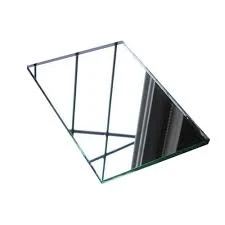

The Market Outlook for Blue Reflective Glass Trends and Pricing
In recent years, the construction and automotive industries have witnessed a significant rise in the popularity of blue reflective glass. Known for its aesthetic appeal and functional benefits, this type of glass has carved its niche in both commercial and residential projects. As industries evolve and environmental considerations become increasingly paramount, it's crucial to examine the factors influencing the price of blue reflective glass.
Understanding Blue Reflective Glass
Blue reflective glass is essentially tinted glass imbued with a reflective coating, which serves multiple functions. First, it offers enhanced aesthetic qualities, providing a modern, sleek appearance that can elevate the design of any building. The striking blue hue also adds a distinctive character while harmonizing beautifully with various architectural styles.
Apart from its visual appeal, blue reflective glass is particularly valued for its functional benefits. The reflective coating reduces heat gain by minimizing the amount of solar radiation that enters a building. This not only contributes to the comfort of occupants but also leads to energy savings, as reduced reliance on air conditioning systems lowers electricity bills. Furthermore, the glass provides an element of privacy during the day, limiting the visibility from outside while allowing natural light to filter in.
Market Trends Influencing Pricing
The price of blue reflective glass is contingent on several key factors

1. Material Costs The cost of raw materials, including silica, soda ash, and other components used in the manufacturing process, plays a significant role in determining the overall price of blue reflective glass. Fluctuations in supply chains can lead to unpredictable price changes.
2. Demand from Industries The growing demand from various sectors, such as architecture, automotive, and interior design, can significantly impact pricing. With urbanization and a focus on sustainable building practices, more developers and contractors are opting for blue reflective glass, thus driving prices upward.
3. Production Techniques Advanced manufacturing processes can enhance the quality and durability of blue reflective glass. However, the introduction of innovative technologies often comes with a higher production cost, which can reflect in the final price.
4. Competitive Landscape The presence of various manufacturers in the global market creates a competitive atmosphere that can influence pricing strategies. Companies striving for market share may offer promotional prices, which can temporarily affect overall market prices.
5. Seasonal Variations Seasonal changes can also play a role in supply and demand dynamics, whereby certain seasons may see a spike in construction activities, driving up the demand (and price) for blue reflective glass.
Conclusion
As the construction and automotive industries continue to evolve, the demand for blue reflective glass is likely to grow, making it an attractive option for builders and designers looking to enhance both aesthetic appeal and energy efficiency. Understanding the factors that influence its pricing is essential for stakeholders, from manufacturers to consumers, in navigating this dynamic market. Whether for a cutting-edge skyscraper or a sleek sports car, blue reflective glass is poised to maintain its esteemed position as a preferred choice in modern construction and design. With a keen eye on industry trends, buyers can effectively engage in the market, ensuring they make informed purchasing decisions in an ever-changing landscape.